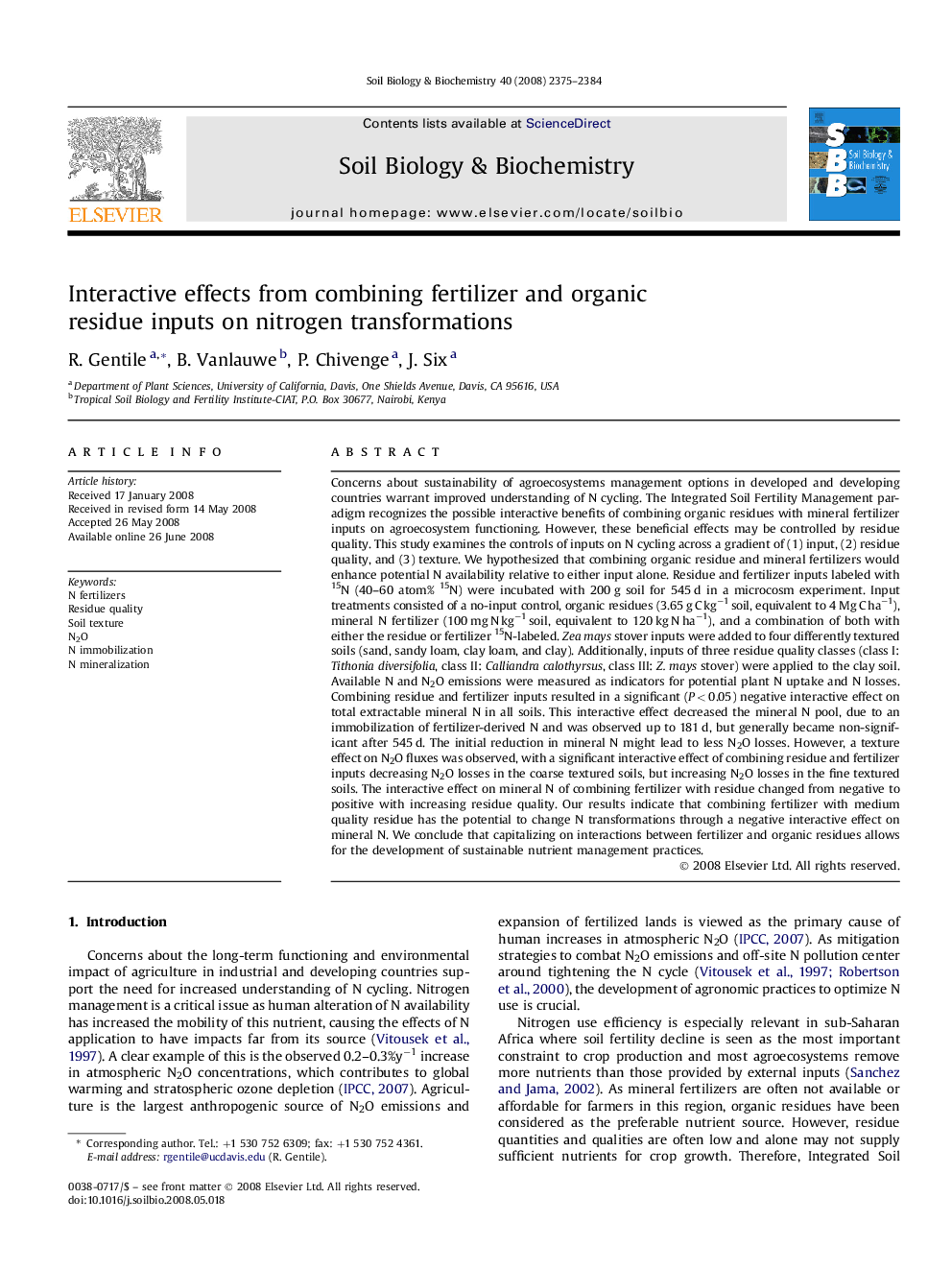| کد مقاله | کد نشریه | سال انتشار | مقاله انگلیسی | نسخه تمام متن |
|---|---|---|---|---|
| 2026900 | 1070054 | 2008 | 10 صفحه PDF | دانلود رایگان |

Concerns about sustainability of agroecosystems management options in developed and developing countries warrant improved understanding of N cycling. The Integrated Soil Fertility Management paradigm recognizes the possible interactive benefits of combining organic residues with mineral fertilizer inputs on agroecosystem functioning. However, these beneficial effects may be controlled by residue quality. This study examines the controls of inputs on N cycling across a gradient of (1) input, (2) residue quality, and (3) texture. We hypothesized that combining organic residue and mineral fertilizers would enhance potential N availability relative to either input alone. Residue and fertilizer inputs labeled with 15N (40–60 atom% 15N) were incubated with 200 g soil for 545 d in a microcosm experiment. Input treatments consisted of a no-input control, organic residues (3.65 g C kg−1 soil, equivalent to 4 Mg C ha−1), mineral N fertilizer (100 mg N kg−1 soil, equivalent to 120 kg N ha−1), and a combination of both with either the residue or fertilizer 15N-labeled. Zea mays stover inputs were added to four differently textured soils (sand, sandy loam, clay loam, and clay). Additionally, inputs of three residue quality classes (class I: Tithonia diversifolia, class II: Calliandra calothyrsus, class III: Z. mays stover) were applied to the clay soil. Available N and N2O emissions were measured as indicators for potential plant N uptake and N losses. Combining residue and fertilizer inputs resulted in a significant (P < 0.05) negative interactive effect on total extractable mineral N in all soils. This interactive effect decreased the mineral N pool, due to an immobilization of fertilizer-derived N and was observed up to 181 d, but generally became non-significant after 545 d. The initial reduction in mineral N might lead to less N2O losses. However, a texture effect on N2O fluxes was observed, with a significant interactive effect of combining residue and fertilizer inputs decreasing N2O losses in the coarse textured soils, but increasing N2O losses in the fine textured soils. The interactive effect on mineral N of combining fertilizer with residue changed from negative to positive with increasing residue quality. Our results indicate that combining fertilizer with medium quality residue has the potential to change N transformations through a negative interactive effect on mineral N. We conclude that capitalizing on interactions between fertilizer and organic residues allows for the development of sustainable nutrient management practices.
Journal: Soil Biology and Biochemistry - Volume 40, Issue 9, September 2008, Pages 2375–2384